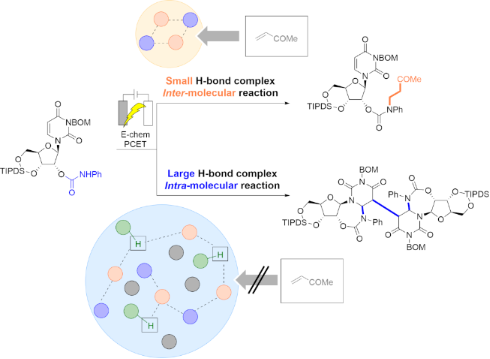Beilstein Journal of Organic Chemistry ( IF 2.7 ) Pub Date : 2024-02-12 , DOI: 10.3762/bjoc.20.27 Kazuhiro Okamoto , Naoki Shida , Mahito Atobe
Abstract
Electrochemically generated amidyl radical species produced distinct inter- or intramolecular hydroamination reaction products via a proton-coupled electron transfer (PCET) mechanism. Cyclic voltammetry (CV) analysis indicated that the chemoselectivity was derived from the size of the hydrogen bond complex, which consisted of the carbamate substrate and phosphate base, and could be controlled using 1,1,1,3,3,3-hexafluoro-2-propanol (HFIP) as an additive. These results provide fundamental insights for the design of PCET-based redox reaction systems under electrochemical conditions.

Beilstein J. Org. Chem. 2024, 20, 264–271. doi:10.3762/bjoc.20.27
中文翻译:

通过电化学 PCET 工艺进行添加剂控制的化学选择性分子间/分子内氢胺化
摘要
电化学产生的酰胺基自由基通过质子耦合电子转移(PCET)机制产生不同的分子间或分子内加氢胺化反应产物。循环伏安法(CV)分析表明,化学选择性取决于氢键络合物的大小,该络合物由氨基甲酸酯底物和磷酸盐碱组成,并且可以使用1,1,1,3,3,3-六氟- 2-丙醇(HFIP)作为添加剂。这些结果为电化学条件下基于 PCET 的氧化还原反应系统的设计提供了基本的见解。

贝尔斯坦 J. 组织。化学。 2024, 20, 264–271。 doi:10.3762/bjoc.20.27



























 京公网安备 11010802027423号
京公网安备 11010802027423号